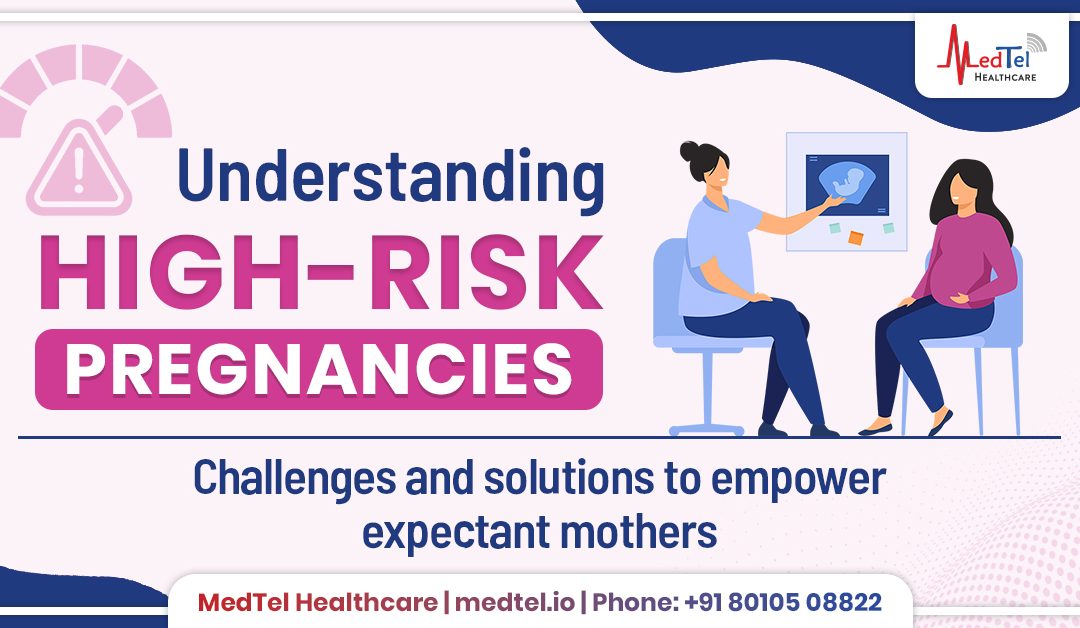Beyond the Joy: The Challenges of High-Risk Pregnancies
Imagine the excitement of expecting a child, followed by the news of a high-risk pregnancy. This can introduce a wave of anxieties and uncertainties, particularly for mothers facing:
Age-related risks: While teenage pregnancy can be illegal due to health risks and limited resources, women over 35 may experience a decline in egg quality leading to a higher chance of miscarriage and birth defects, though many still have healthy pregnancies with additional prenatal testing.
Pre-existing health conditions: Chronic illnesses like diabetes and high blood pressure require close monitoring to manage their impact on pregnancy.
Logistical hurdles: Accessing timely prenatal care can be difficult in some areas, due to geographical limitations or lack of awareness about available resources.
Limited knowledge: Inadequate patient education, particularly in underserved communities, can lead to a lack of awareness about potential risks and complications. This can hinder informed decision-making about their health and delay early detection of problems, impacting both mother and baby.
These challenges contribute to disparities in maternal health outcomes. High-risk pregnancies can significantly impact both the mother’s and baby’s well-being, highlighting the need for a comprehensive approach.
Understanding High-Risk Pregnancies: A Spectrum of Risk Factors
High-risk pregnancies can be caused by a variety of factors. Let’s delve deeper into some of the most common ones:
Maternal Age: Age is a double-edged sword when it comes to pregnancy risk. Women under 18 face higher risks due to their bodies still developing, potentially leading to complications. Conversely, women over 35 may experience a decline in egg quality, increasing the chance of miscarriage and certain birth defects like Down syndrome.
Pre-existing Medical Conditions: Chronic illnesses like high blood pressure, diabetes, autoimmune diseases, and kidney problems can pose risks to both mother and baby. Pregnancy complications like gestational diabetes and preeclampsia also fall under this category.
Lifestyle Choices: Smoking, alcohol consumption, and obesity can negatively impact pregnancy outcomes.
Moving Towards Equitable Care: A Multifaceted Approach
Fortunately, we can create a brighter future for high-risk pregnancies. Here’s where innovative solutions come into play:
Early detection: Implementing effective screening programs and promoting regular prenatal care can identify potential risks early, allowing for timely interventions.
Improved access to care: This can involve increasing healthcare facilities in geographically challenged areas and providing transportation assistance to ensure all mothers have access to necessary resources.
Empowerment through education: Comprehensive educational programs can equip mothers with the knowledge they need to make informed choices and advocate for their health throughout their pregnancy journey.
Utilising Digital Health and IOMT Devices for Risk Identification
Data Integration and Analysis
Digital health platforms and IOMT devices gather and integrate data from multiple sources, including electronic health records, wearable devices, and patient-reported data. Advanced analytics and algorithms analyse this data to identify patterns and trends indicative of potential risk factors.
Remote Monitoring and Telemedicine
Remote monitoring devices enable continuous tracking of vital signs, fetal movements, and other relevant parameters from the comfort of home. Telemedicine platforms facilitate virtual consultations, allowing expectant mothers to communicate with healthcare providers without the need for in-person visits, ensuring timely interventions and support.
Genetic Screening and Counseling
Digital health platforms offer access to genetic screening tests and counseling services, enabling expectant mothers to assess their risk of genetic disorders and birth defects. These platforms provide educational resources and personalized recommendations based on genetic risk factors, empowering informed decision-making.
Personalized Risk Assessments
Machine learning algorithms and artificial intelligence generate personalized risk assessments for expectant mothers. By considering individual health history, demographics, and lifestyle factors, these assessments provide tailored recommendations for prenatal care and risk management.
Patient Engagement and Education
Digital health tools engage patients in their care by providing access to educational resources, interactive tools, and personalized health insights. Expectant mothers can track their progress, monitor health parameters, and receive timely reminders for prenatal appointments and screenings, empowering them to take an active role in managing their pregnancies.
Conclusion
In conclusion, high-risk pregnancies require a multi-faceted approach to ensure optimal outcomes. By addressing the challenges through early detection, improved access to care, education, and innovative digital health solutions, we can empower mothers, bridge healthcare disparities, and create a brighter future for both mothers and babies.
